Think companion planting is all sunshine and rainbows? Before you plant that perfect patch, beware of hidden chemical feuds lurking underground.
From sulfur-spewing onions to allelopathic fennel, these “bad buddies” will sabotage your harvest.
And if you were wondering, the worst buddy is potatoes, clocking in with 4 appearances on our blacklist- watch what you plant next to these guys!
1. Beans & Onions
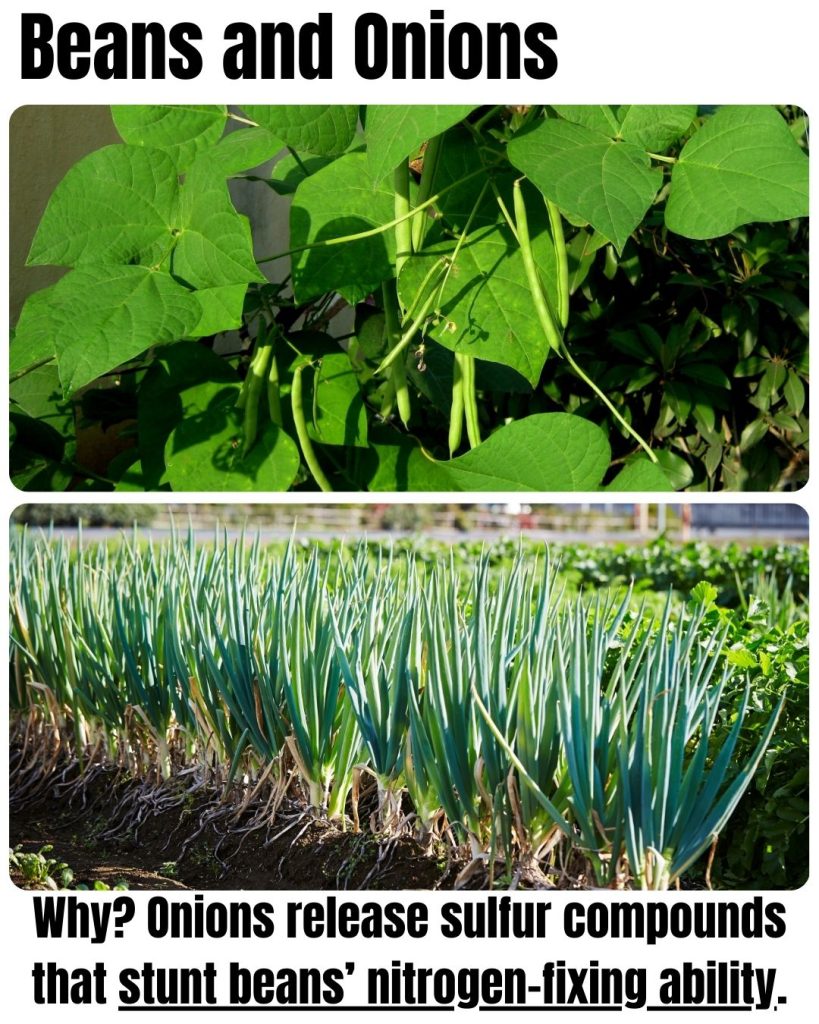
Beans and onions may both thrive in your garden, but they’re terrible neighbors.
Onions emit sulfurous compounds that inhibit the nitrogen-fixing bacteria on beans’ roots, robbing beans of essential nutrients.
This chemical warfare not only stunts bean growth but also dulls onion flavor when beans compete for soil nitrogen.
Planting them side by side can lead to sparse bean pods and undersized bulbs, turning a vibrant vegetable patch into a disappointing yield. Keep these two apart to maximize bean pod harvest and bulb size.
2. Beans & Garlic
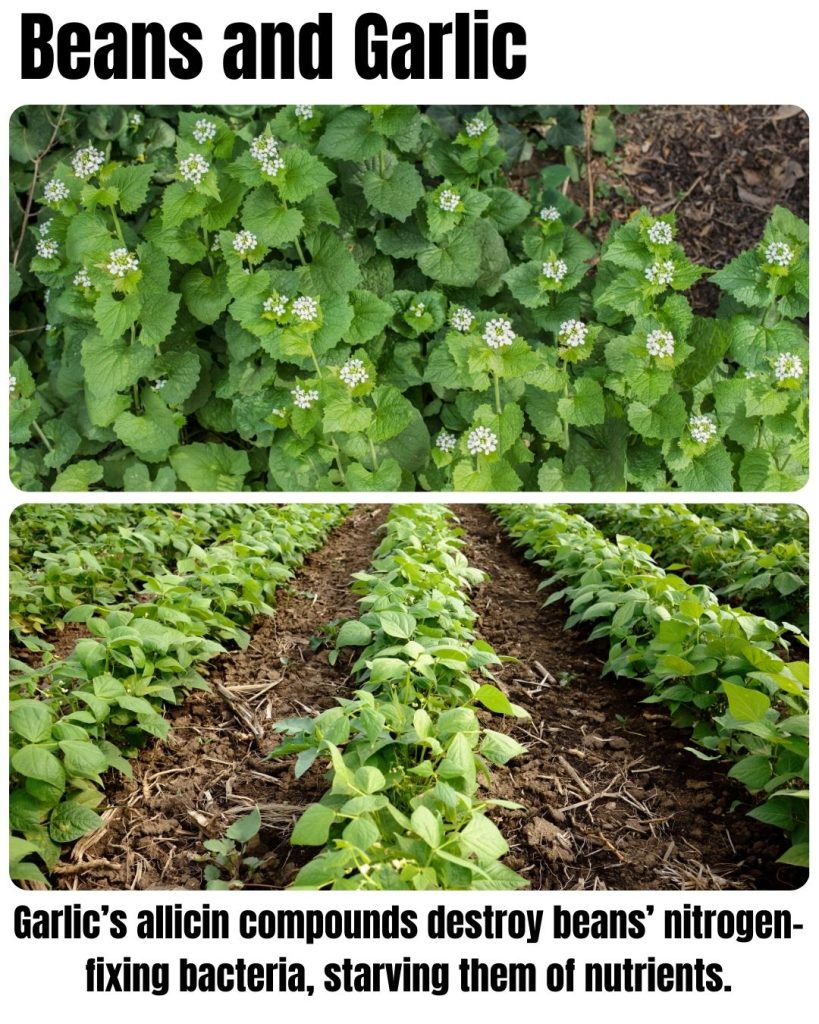
Beans flourish by partnering with beneficial bacteria, converting atmospheric nitrogen into a feast of nutrients.
But garlic, with its potent allicin-rich roots, unwittingly kills those helpful microbes, leaving beans starved. When garlic’s natural defenses seep into the soil, it disrupts the symbiotic relationship that beans depend on for lush foliage and plump pods.
The result? Reduced yields, yellowing leaves, and a frustrated gardener staring at empty vines.
3. Beans & Fennel
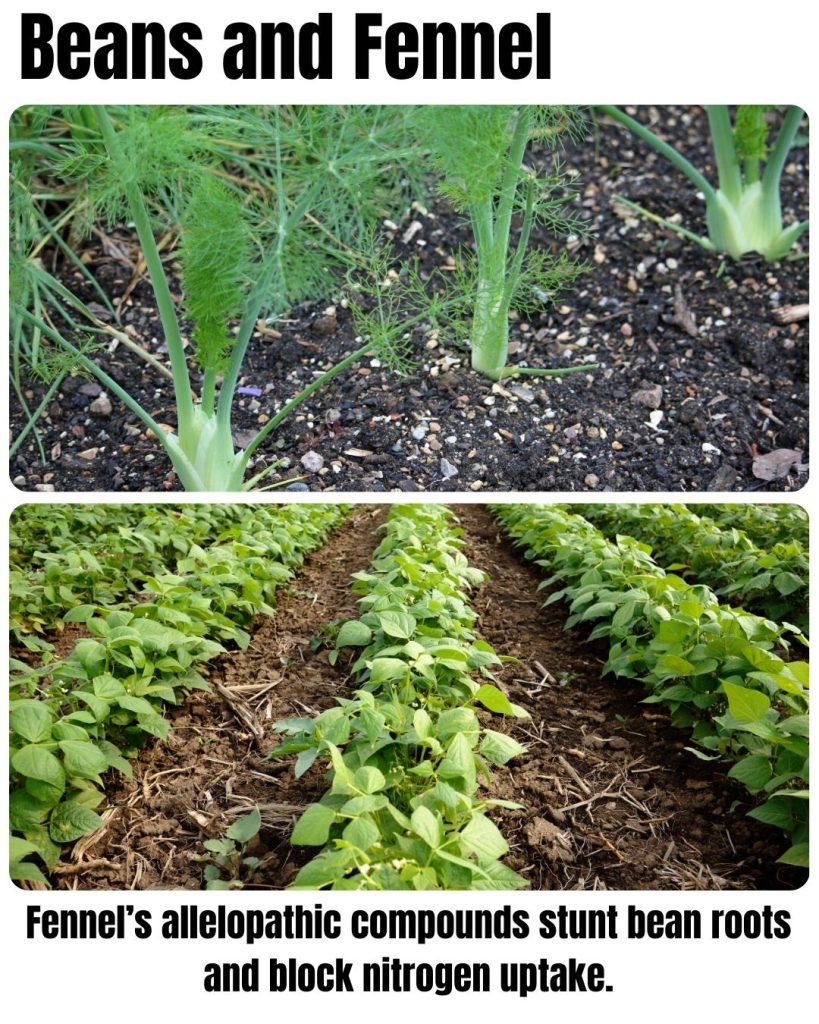
Fennel’s sweet, anise-like fronds might look inviting, but underneath the soil it’s a silent enemy to beans.
Fennel releases allelochemicals that inhibit bean root development, preventing young plants from establishing strong root systems.
Without healthy roots, beans can’t absorb water or nutrients effectively, leading to sparse vines, yellowing foliage, and tiny, misshapen pods.
Even a small fennel plant nearby can sabotage an entire bean row, turning your vibrant green beans into a wilting disappointment.
4. Peas & Onions
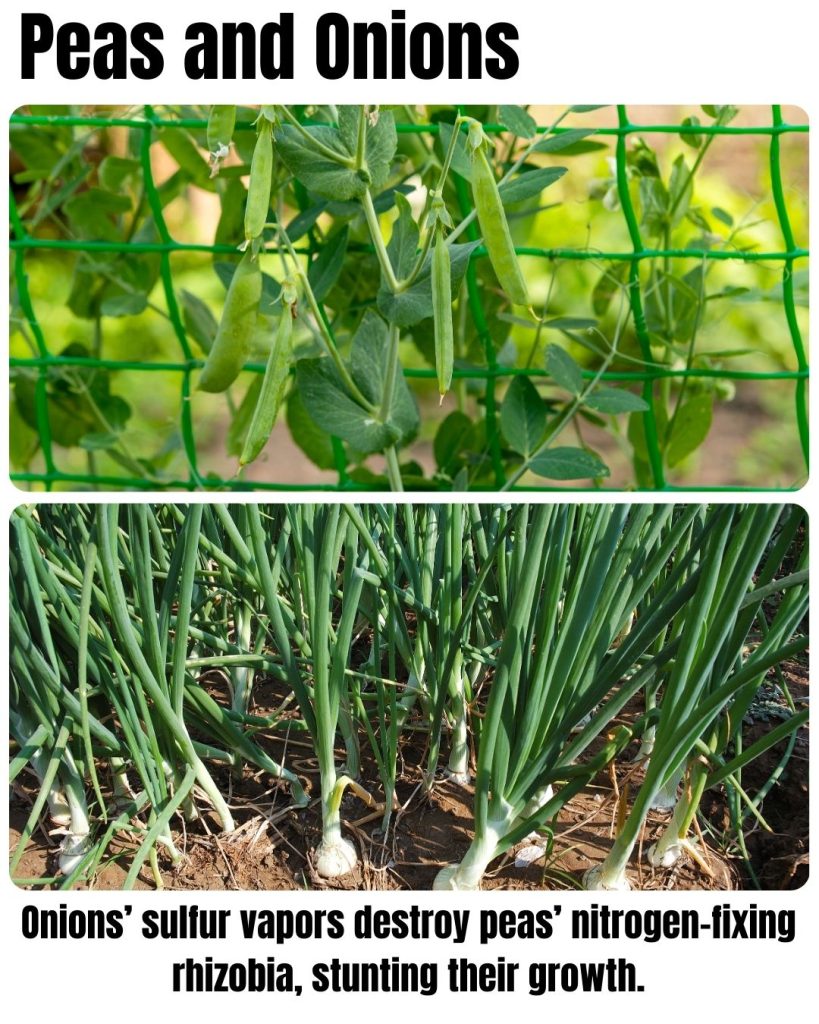
Peas rely on nitrogen-fixing bacteria to enrich the soil and fuel their delicate tendrils, but onions undermine that alliance.
Onions emit sulfur-rich vapors that travel through the soil and kill the beneficial rhizobia clinging to pea roots.
Stripped of their microbial partners, pea plants struggle to form sturdy vines and healthy pods. Expect stunted growth, pale leaves, and a disappointing harvest if these two share garden real estate.
5. Peas & Garlic
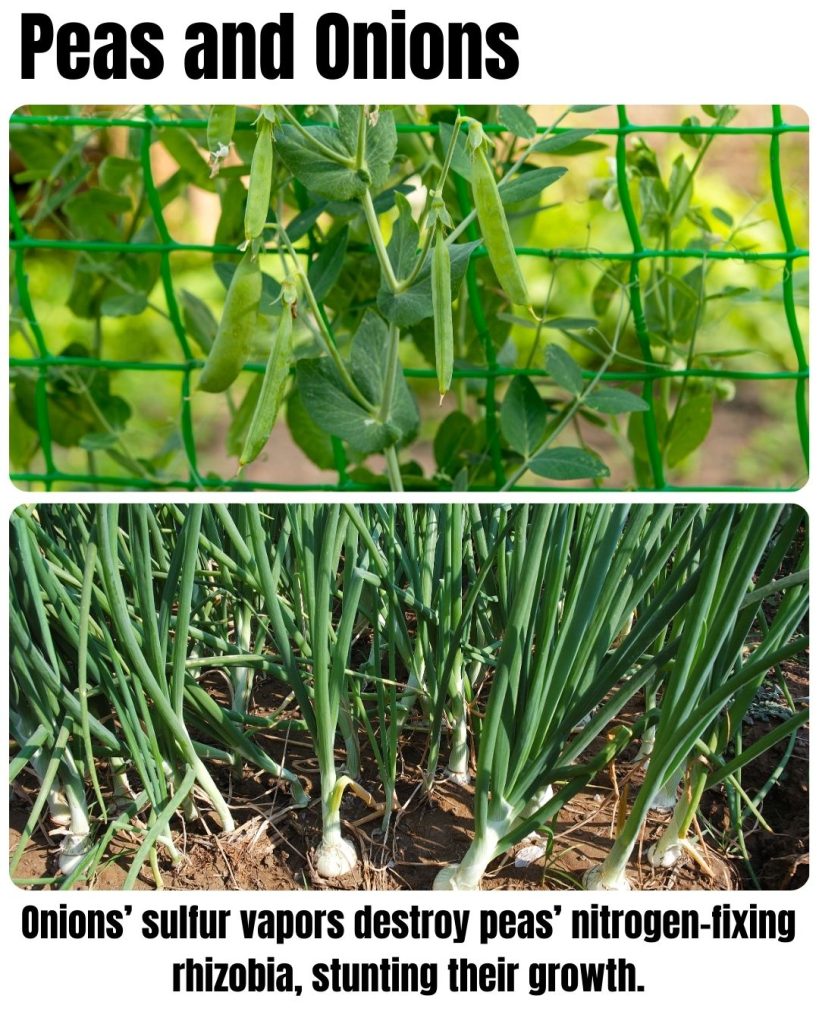
Peas depend on friendly soil bacteria to pull nitrogen from the air, fueling their crisp pods and vibrant vines.
Garlic, however, pumps allicin (its natural defense) into the surrounding earth, wiping out those vital microbes.
Without that bacterial boost, pea plants suffer nutrient starvation, producing frail stems and pale, underfilled pods.
Even a neighboring clove can sabotage an entire pea patch, leaving gardeners with limp vines and meager yields instead of a lush, protein-packed harvest.
Quick why-they-clash for your image:
6. Peas & Fennel
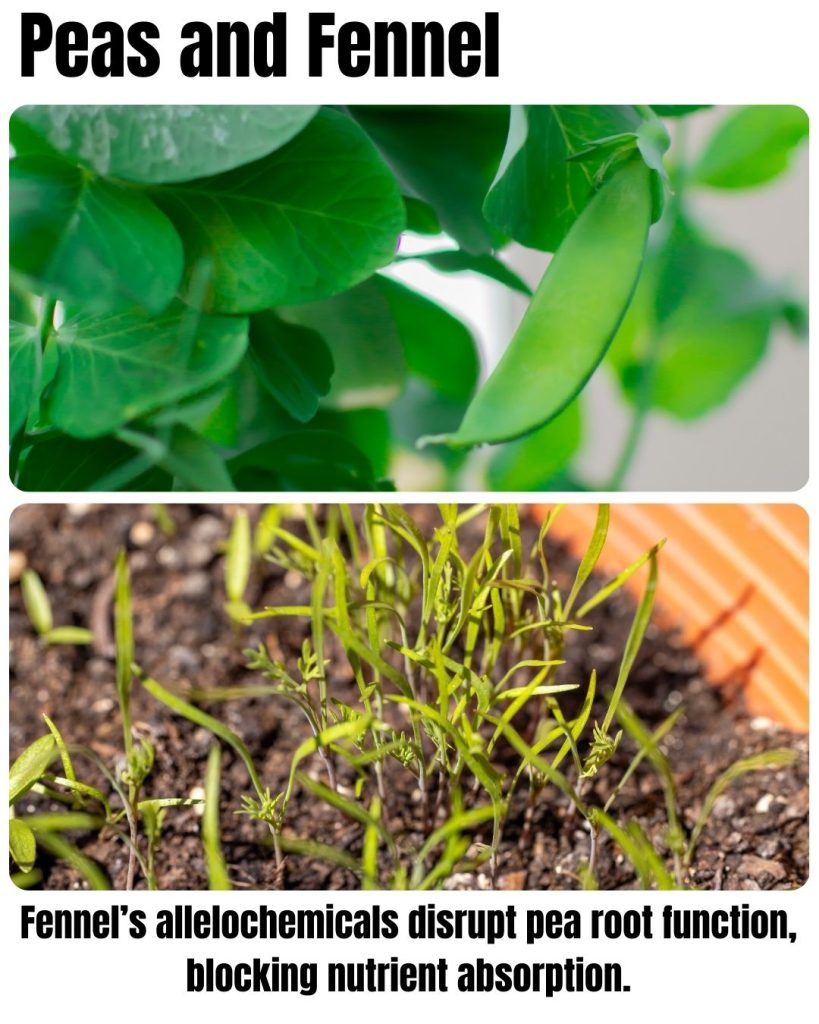
Peas crave a friendly soil ecosystem, leaning on nitrogen-fixing bacteria to build strong vines and full pods.
Fennel, however, unleashes potent allelochemicals that seep into the earth, disrupting pea root function and choking off nutrient uptake.
Even a small fennel sprig can cast a chemical shadow across an entire pea row, causing wilting tendrils, yellow patches, and hollow pods.
Your once-promising pea patch turns into a string of underperformers when these two plants share a bed.
7. Cabbage (and other brassicas) & Strawberries
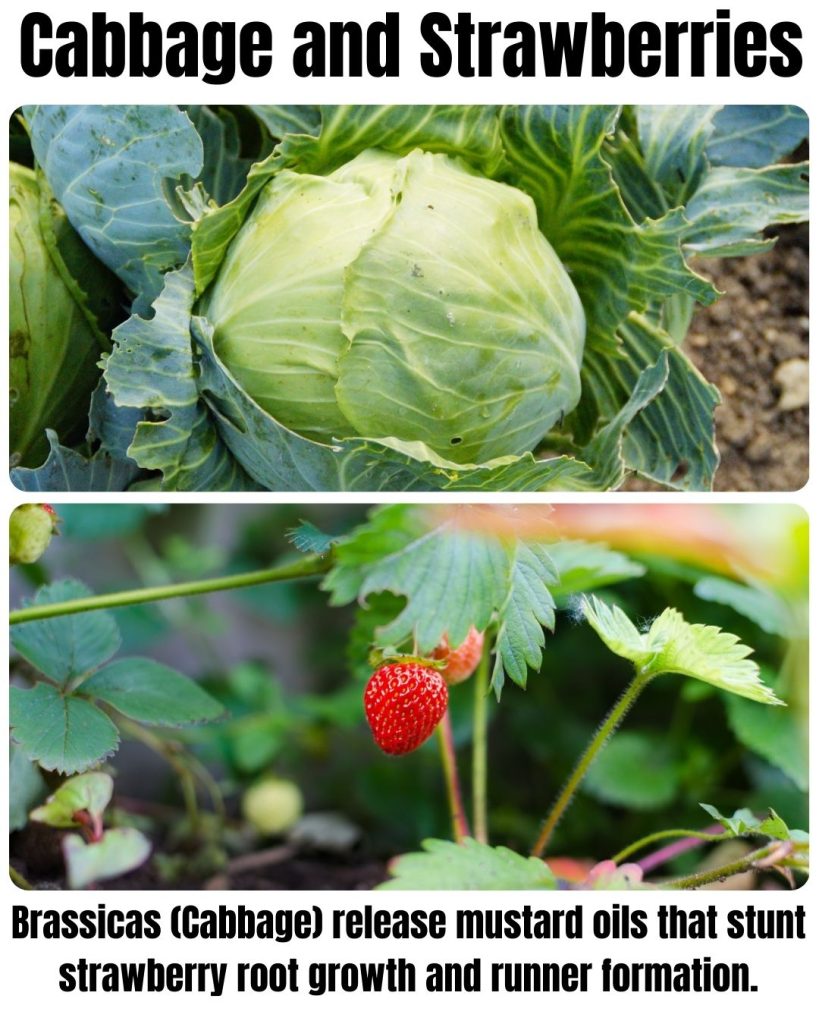
Cabbage and its brassica cousins; broccoli, kale, and Brussels sprouts release mustard oils from their roots that act like a natural herbicide, inhibiting strawberry runners and root development.
Strawberry plants weakened by these compounds struggle to send out the runners that form new crowns, leading to fewer berries, smaller fruits, and sparse ground cover.
Even if both plants look healthy at first, brassica chemicals build up in the soil over time, silently stunting strawberries and turning a lush berry patch into thin, underperforming rows.
8. Cabbage & Tomatoes
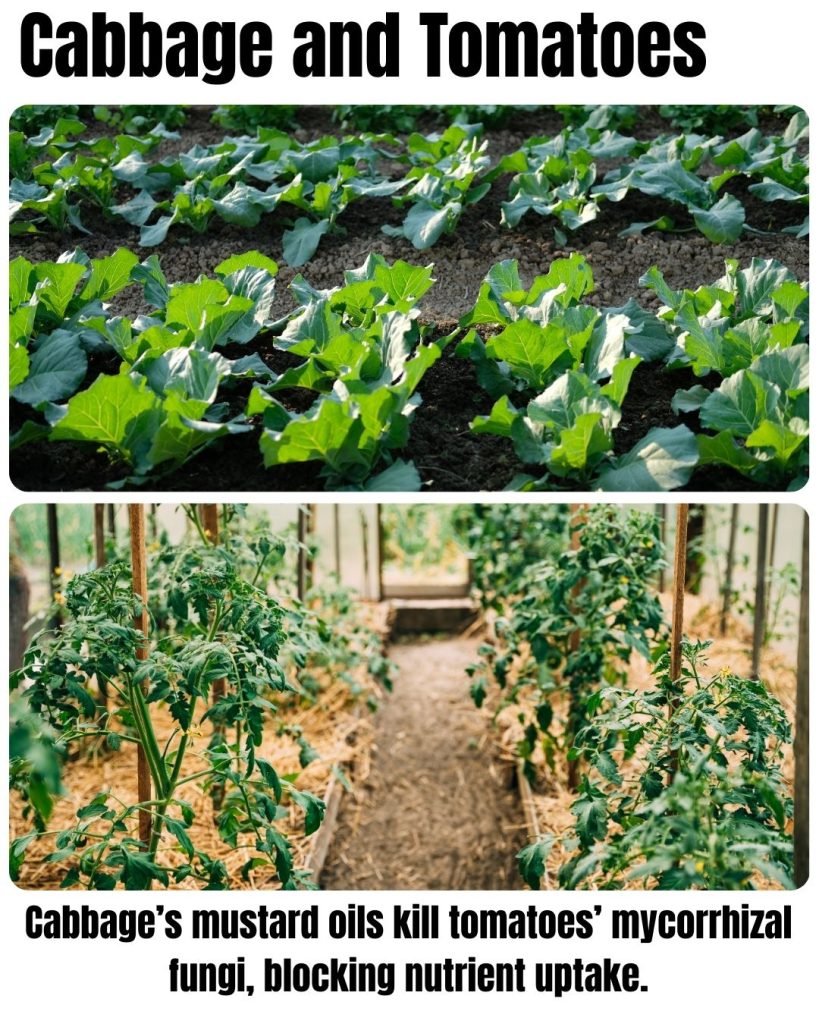
Cabbage and tomatoes seem like harmless neighbors, but their roots wage a subtle chemical war.
Cabbage releases glucosinolates, natural mustard oils that break down into compounds toxic to the mycorrhizal fungi that tomatoes rely on for phosphorus and water uptake.
Deprived of these vital partners, tomato plants suffer blossom drop, uneven fruit ripening, and reduced yields.
Even if both look healthy early on, this underground feud slowly saps tomato vigor, leaving you with fewer, smaller fruits.
9. Tomatoes & Potatoes
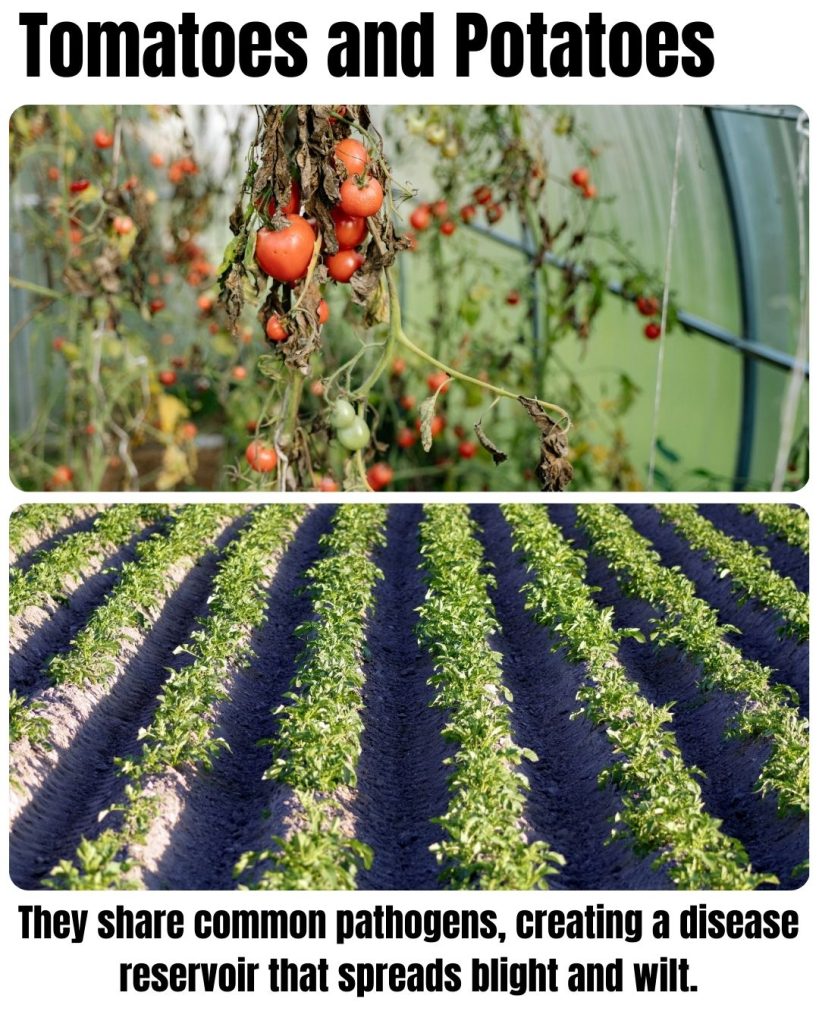
Tomatoes and potatoes share more than a family tree; they share diseases like late blight and verticillium wilt, which can ravage both crops when planted together.
Infected foliage and tubers create a disease reservoir in your garden, leading to sudden leaf collapse, brown lesions, and rotting fruit underground.
What starts as a few discolored spots can quickly escalate into a full-blown outbreak, decimating your harvest of both juicy tomatoes and starchy potatoes.
10. Tomatoes & Corn
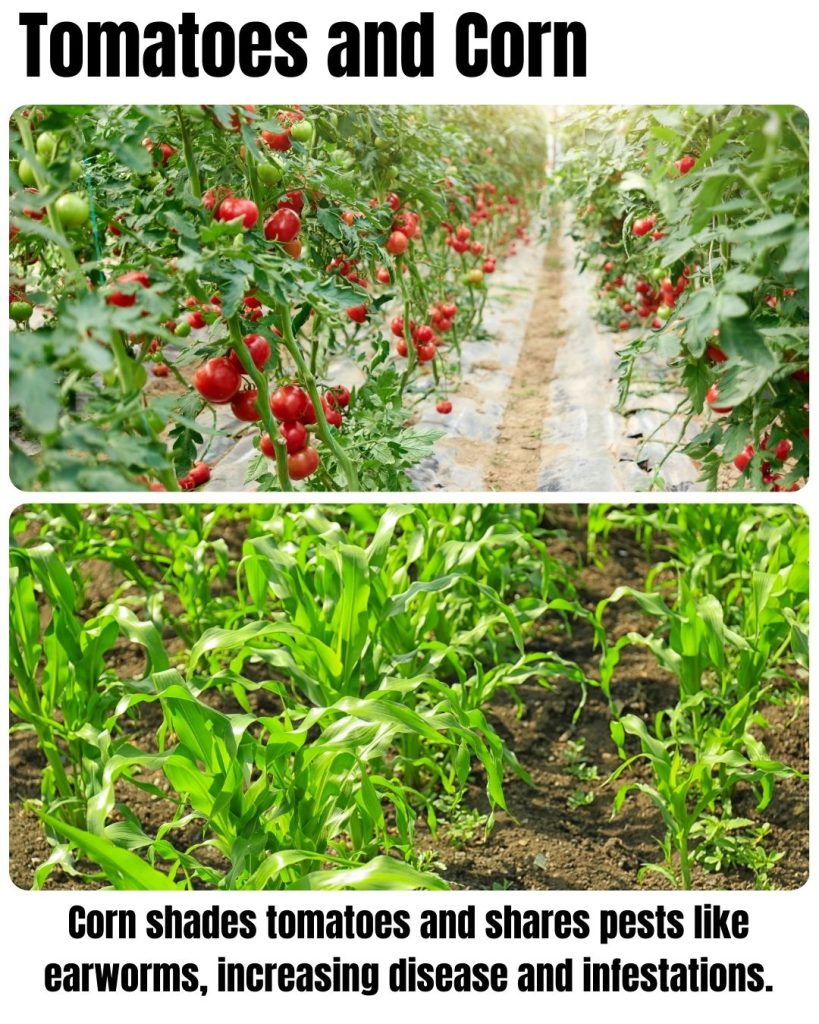
Tomatoes and corn might seem like a classic “Three Sisters” setup, but they’re actually poor companions in modern gardens.
Tall corn stalks shade tomato foliage, reducing sunlight and air circulation, which are key ingredients for healthy fruit ripening and disease prevention.
Even worse, both crops attract the same pests, especially corn earworms and tomato fruitworms, which can bounce between stalks and vines, leading to widespread infestations.
Planting them together sets up a perfect storm of shade, humidity, and hungry insects that devastate both yields.
11. Cucumbers & Potatoes
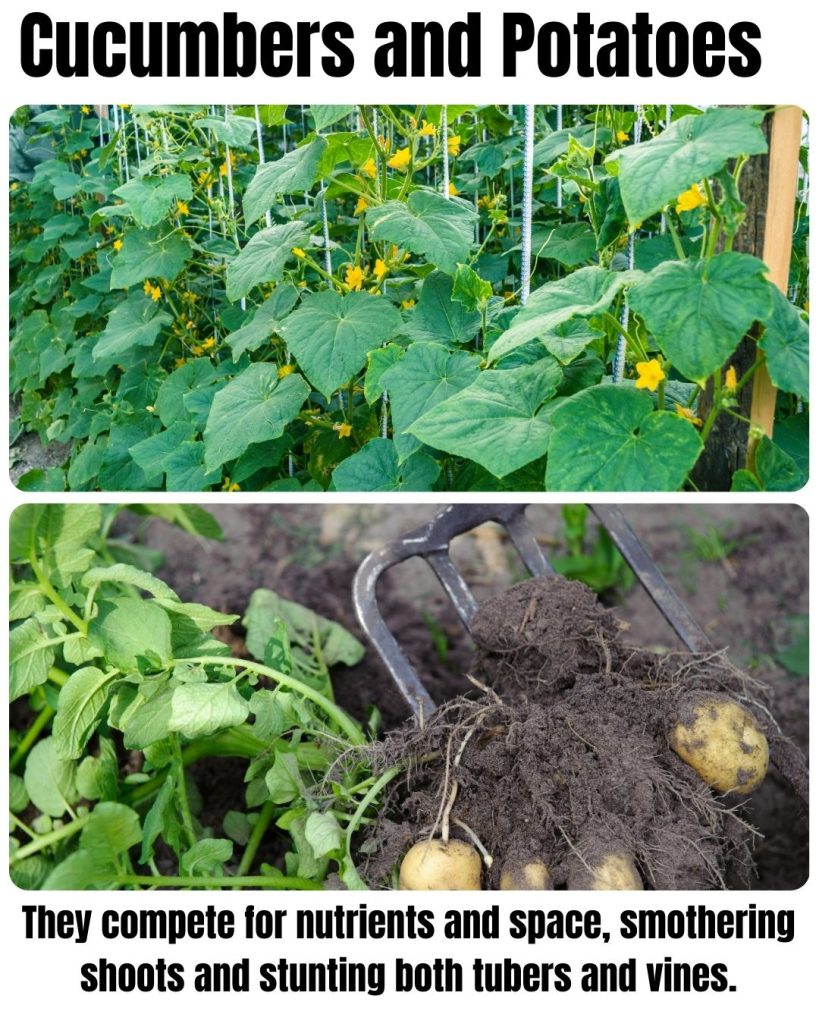
Cucumbers and potatoes are both heavy feeders, but they thrive under different soil conditions.
Cucumbers prefer loose, moist earth near the surface, while potatoes need well-drained soil deeper down to form healthy tubers.
When planted together, cucumber roots intercept moisture and nutrients before potatoes can develop, and their sprawling vines smother young potato shoots.
This rivalry leads to undersized tubers, bitter, misshapen cucumbers, and a garden bed riddled with fungal issues from poor airflow.
12. Cucumbers & Sage
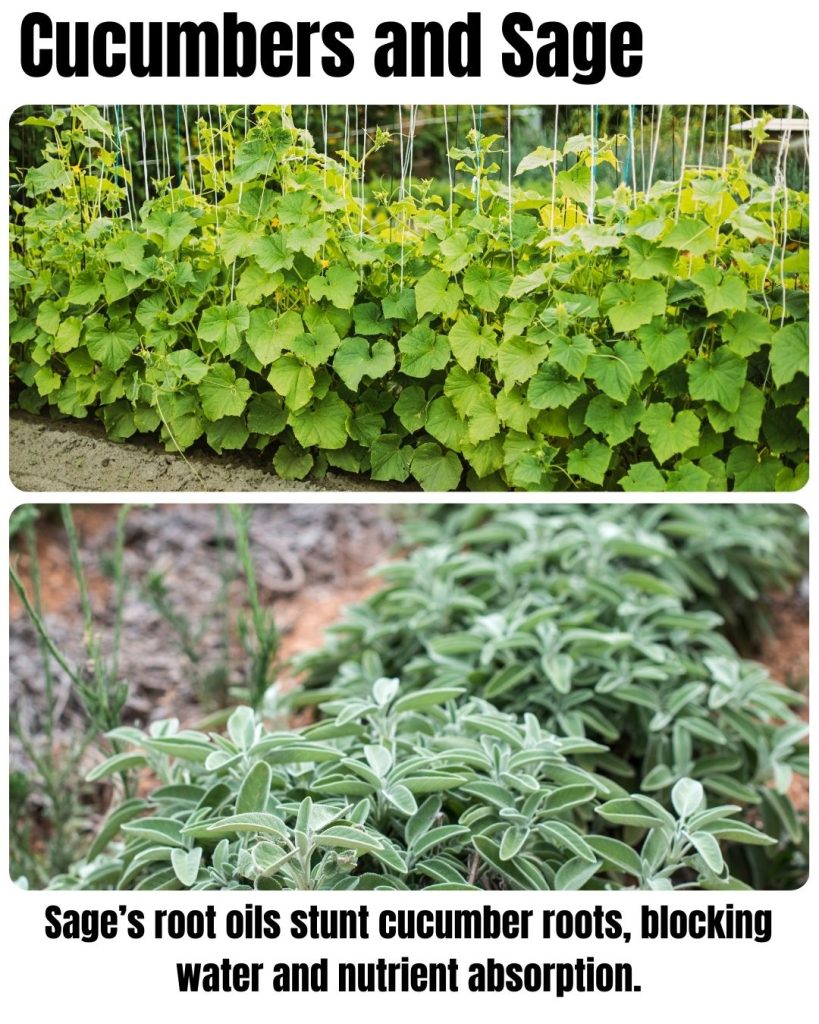
Cucumbers thrive on moist, nutrient-rich soil and plenty of space for their sprawling vines, but sage brings its own chemistry underground.
Sage roots secrete essential oils that inhibit cucumber root growth, limiting water and nutrient uptake.
Cucumber vines struggling for resources produce small, bitter fruit, while sage remains unaffected.
Even a single sage plant at the edge of your cucumber row can cast a chemical shadow, turning a once-vibrant patch into stunted, underperforming vines.
13. Asparagus & Onions
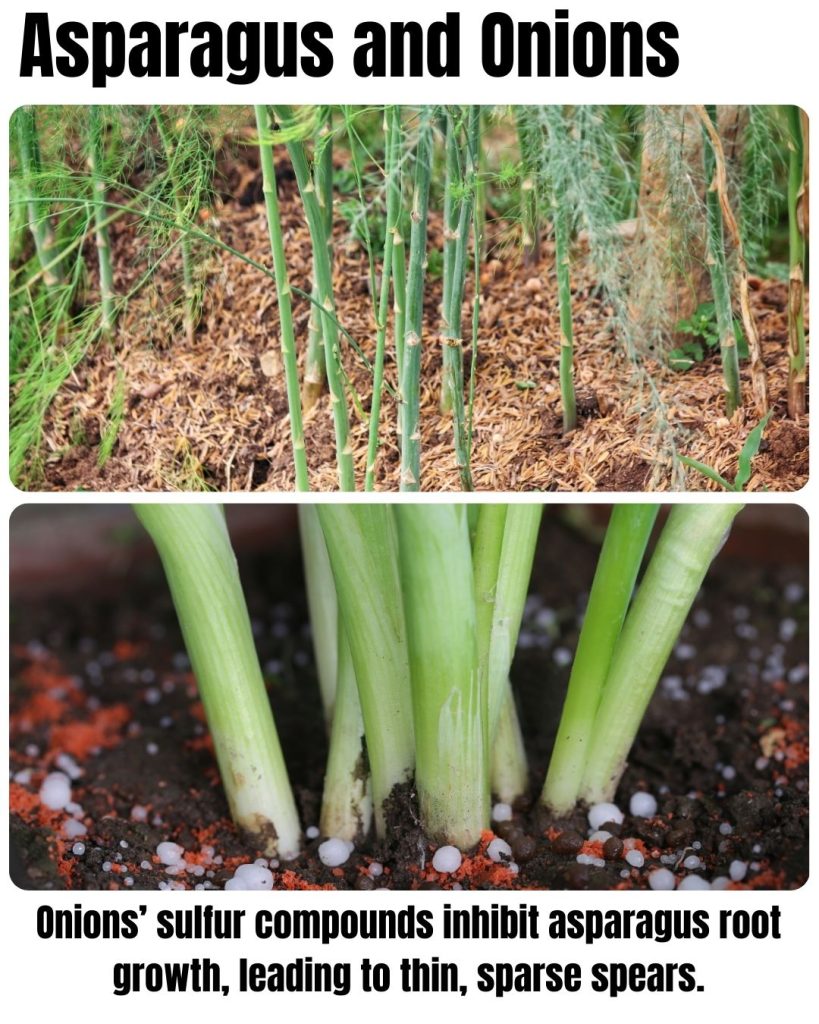
Asparagus crowns need deep, loose soil and a steady supply of nutrients to send up thick, delicious spears.
Onions, however, release sulfur compounds that drift through the earth and interfere with asparagus root development.
Blocked from accessing moisture and minerals, asparagus spears emerge thin and spindly, with uneven growth and reduced harvests.
Planting these two together invites a hidden chemical feud that leaves your asparagus bed looking more like a patch of wiry weeds than a gourmet treat.
14. Asparagus & Potatoes
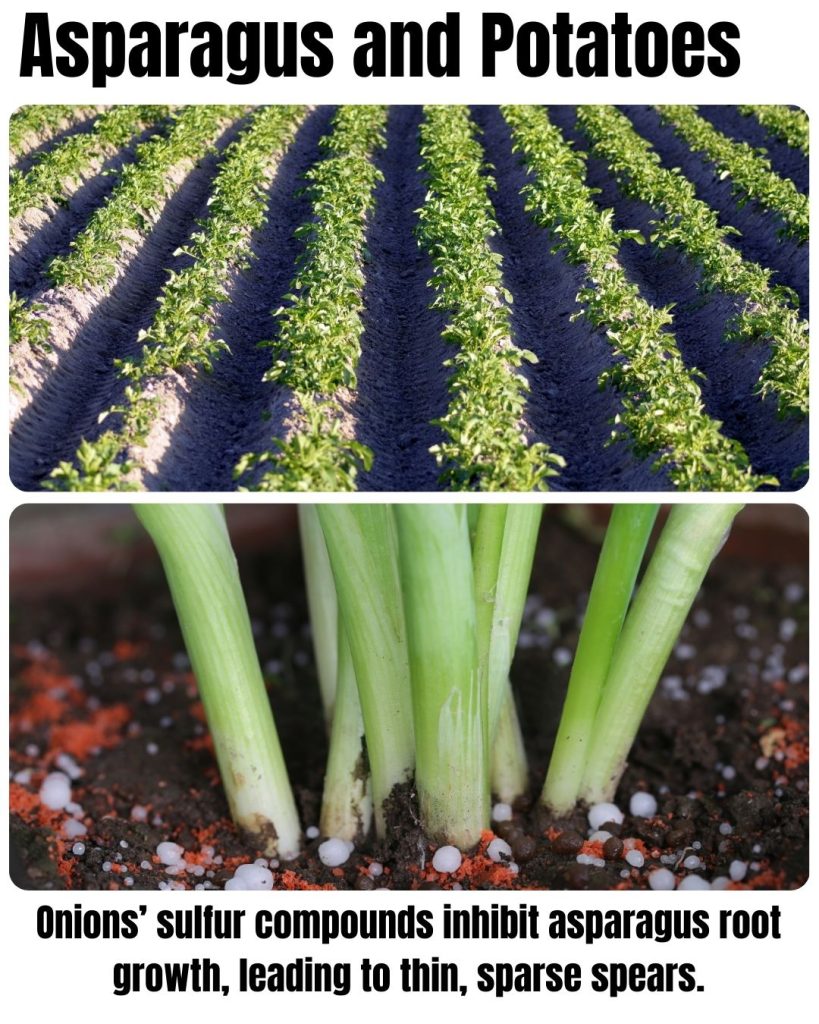
Potatoes and asparagus both demand rich, loose soil, but their underground battles can wreck a season’s work.
Potatoes are heavy feeders, aggressively pulling nitrogen and phosphorus from the root zone, while their dense tubers compact the soil asparagus needs for healthy crowns.
That competition leads to smaller spears, delayed sprouting, and misshapen tubers. What starts as nutrient rivalry quickly turns into a cramped battlefield, leaving both crops underwhelming.
15. Potatoes & Sunflowers
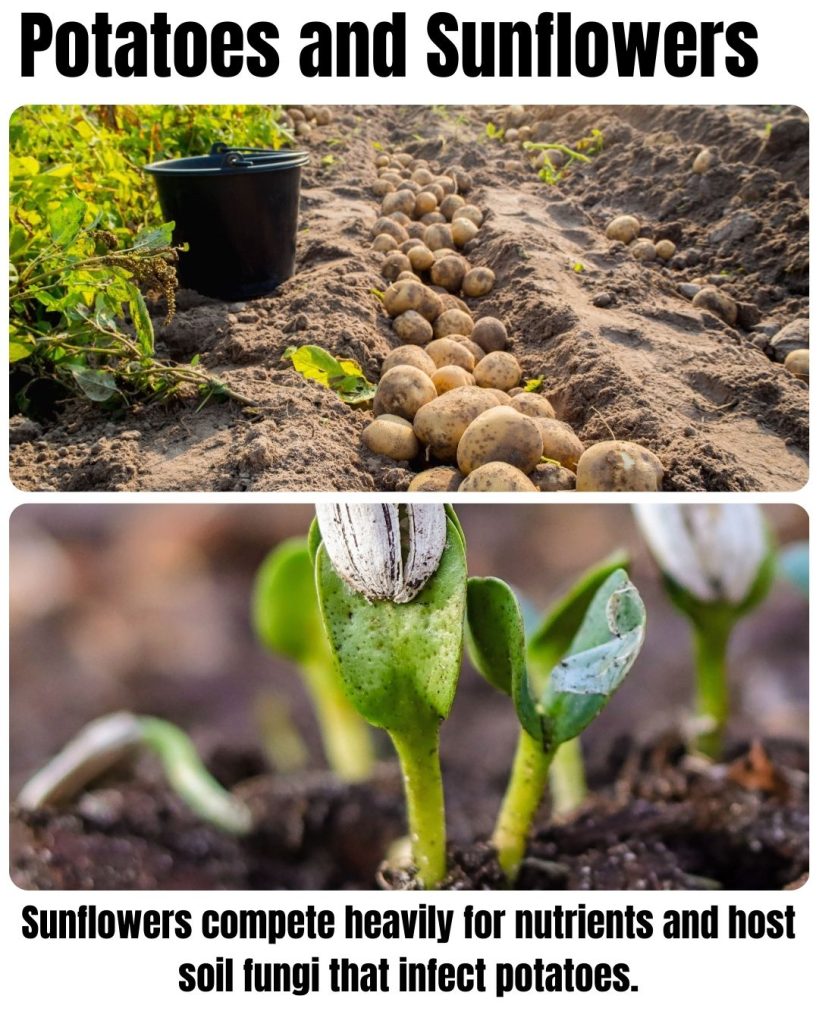
Sunflowers draw huge amounts of water and minerals to fuel their towering stalks and enormous blooms, right from the same root zone potatoes need to swell.
Their deep, fibrous roots also harbor verticillium and fusarium fungi, which can hop into nearby potato plants and cause wilt diseases.
The result is smaller tubers, yellowing foliage, and a garden bed plagued by pathogens instead of golden harvests. Keep these giants and tubers in separate beds to avoid a disastrous disease exchange.
A BIG Thank you:
Thank you so much for reading. We are flattered that you made it all the way to the end of this article. Have a great day and happy planting!